「どうして雲は動くの?」「なぜ夜になると暗いの?」幼いわが子から浴びせられる“終わらない質問ラッシュ”に、つい「あとでね」「先生に聞こうか」と逃げたくなる瞬間はありませんか。しかし幼児教育の世界では、子どもの「なぜ?」は知的好奇心のシグナルと捉えます。脳科学的にも、疑問を抱いた瞬間に前頭前野が活性化し、情報を整理・統合する回路が動き出すことが分かっています。つまり「なぜ?」が芽生えたその時こそ、学びの扉が開くチャンスなのです。本稿では、子どもの疑問を家庭でどう育て、深い学びへとつなげるかを具体的に解説します。
1 「なぜ?」が育む三つの力
まずは、子どもの疑問がどんな力を伸ばすのかを整理しましょう。第一に探究心。疑問を持ち、自分で答えを探すプロセスは、学びを“自分事”に変えます。第二に論理的思考。仮説を立て、観察や実験で検証し、結果を言語化する過程で、筋道を立てて考える習慣が育ちます。第三にメタ認知。「分からないことがある」と気づくこと自体が、学びの出発点だと理解できるからです。
2 親のマインドセットと聞き方――“答える人”ではなく“伴走者”へ
子どもの「なぜ?」を学びに変えるカギは、親の姿勢にあります。最初に必要なのは完璧な答えを用意しようとしない勇気です。むしろ「面白い質問だね。ママも詳しく知らないから一緒に調べよう」と、親自身が学び手になる姿を見せるほうが効果的です。
聞き方のポイントは三つあります。
- オウム返しで共感を示す
「なんで虹は七色なの?」→「虹が七色なのは不思議だよね」。疑問をそのまま言い換えるだけで、子どもは「聞いてもらえた」と感じます。 - 問いを問いで返す
「どうして思う?」と軽く投げ返すと、子どもは自分なりの仮説を立て始めます。 - 感情を乗せた相づち
「へえ!」「わくわくするね」と感嘆詞を添えると、疑問を持つこと自体が楽しい体験になります。
3 家庭でできる“学びへの橋渡し”――五つの実践アイデア
3‑1 観察ノートで“見える化”
身近な疑問ほど観察が効果的です。たとえば「なぜ夕焼けは赤いの?」と聞かれたら、夕方の空を毎日スマホで撮影し、時間と色の変化をノートに貼ります。色鉛筆でグラデーションを塗り分けるだけでも、データ化の第一歩になります。
3‑2 ミニ実験で手を動かす
「氷はなぜ溶ける?」という疑問には、氷に塩や砂糖をまぶし、溶ける速さを比べる実験がおすすめです。結果をタイマーで計り、グラフにすると算数的要素も盛り込めます。
3‑3 本とデジタルを“並列利用”
図鑑で基礎知識を得たあと、YouTubeの科学チャンネルで実際の映像を見せると、静的情報と動的情報が相互補完され、理解が深まります。
3‑4 生活シーンを教材化
料理中の「どうしてお湯はぶくぶくするの?」は、沸点の概念を教える好機です。温度計で水温を測りながら説明すれば、理科と家庭科がリンクします。
3‑5 疑問リストを“家族の共有財産”に
冷蔵庫にホワイトボードを貼り、子どもが思いついた疑問を書き込むスペースを設けます。週末に一つ選んで家族で調べる習慣ができれば、学びが家庭文化になります。
4 失敗から学ぶ環境づくり――“間違いは宝の地図”
探究活動では、仮説が外れることが多々あります。そのとき親が「ほら、違ったでしょ」と言うと、子どもは挑戦を避けるようになります。大切なのはエラーを検証の材料に変える視点です。「予想と違ったね。どこが違ったか一緒に考えよう」と声をかけ、失敗を次の仮説づくりに活用しましょう。失敗談を共有するときは、親自身の経験も包み隠さず語ると効果倍増です。
まとめ
子どもの「なぜ?」は、家庭を小さな研究所に変える力を秘めています。親が伴走者となり、観察ノートやミニ実験、本とデジタルの併用など、五感と頭脳を総動員できる環境を用意すれば、疑問はやがて深い学びへと育ちます。最後にもう一度強調したいのは、完璧な答えより共に考えるプロセスが子どもを伸ばすということ。今日からぜひ、わが家のホワイトボードに最初の「なぜ?」を書き込んでみてください。その一行が、未来の探究者を育む第一歩になるはずです。
Turning “Why?” into Learning at Home: Practical Tips for Parents
“Why do clouds move?” “Why does it get dark at night?” Endless questions from young children can tempt parents to reply, “Ask your teacher later.” Yet in early‑childhood education, a child’s why is viewed as a signal of intellectual curiosity. Neuroscience shows that questioning sparks the prefrontal cortex, activating circuits for organizing and integrating information. Each “Why?” is thus an open door to learning. This article explains how families can nurture those questions and turn them into deep, joyful study.
1 Three Powers Cultivated by Asking “Why?”
First, questions fuel inquiry skills: learning becomes personal when children chase their own curiosities. Second, they build logical thinking: forming hypotheses, observing, experimenting, and verbalizing results trains step‑by‑step reasoning. Third, they foster metacognition: recognizing “I don’t know yet” is the true starting line of learning.
2 Mindset and Listening—Be a Companion, Not a Walking Encyclopedia
Parents need the courage not to supply perfect answers. Saying, “Great question—let’s find out together,” models lifelong learning. Three listening tips:
- Echo for empathy—repeat the child’s question to show you heard.
- Answer with another question—“What do you think?” invites hypothesis‑making.
- Add emotional exclamations—“Wow!” or “That’s exciting!” makes questioning itself enjoyable.
3 Five Home Strategies for Bridging Questions to Learning
3‑1 Observation Notebook
If your child asks, “Why is the sunset red?” photograph the sky each evening and paste the images into a notebook, noting time and color. Even simple crayon gradients count as data.
3‑2 Mini Experiments
For “Why does ice melt?” sprinkle salt and sugar on ice cubes, time the melting, and graph the results—science plus math in one go.
3‑3 Parallel Use of Books and Digital Media
Read a picture encyclopedia, then watch a related science video. Static and dynamic information reinforce each other.
3‑4 Turn Daily Life into Lessons
Boiling water while cooking? Explain bubbles and boiling points with a thermometer—linking science to home economics.
3‑5 Family Question Board
Place a whiteboard on the fridge for everyone to jot down questions. Choose one each weekend to explore together, turning inquiry into a family tradition.
4 Creating a Climate Where Mistakes Teach
Hypotheses often fail. If parents say, “See, you were wrong,” children shy away from risk. Instead, treat errors as data: “Our guess was off—let’s see why.” Share your own mistakes, too, so children learn that failure is simply part of discovery.
Conclusion
A child’s “Why?” can transform a household into a laboratory of wonder. When parents act as companions, offering observation tools, mini experiments, and rich resources, curiosity grows into deep learning. Remember: the journey of thinking together matters more than perfect answers. Start today by writing the first “Why?” on a family whiteboard. That single line may be the first step toward raising tomorrow’s explorers.




コメント